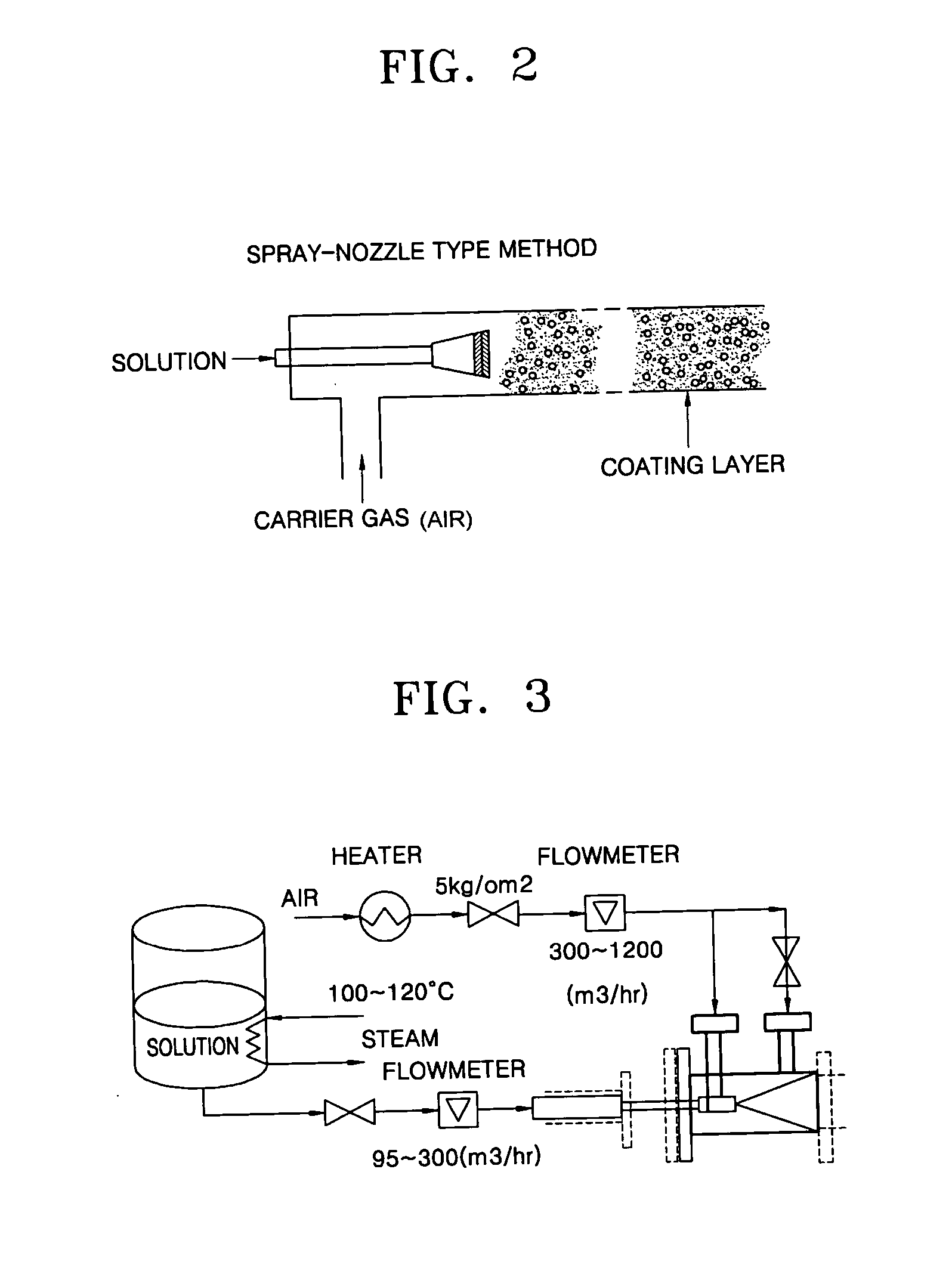Coating film for inhibiting coke formation in ethylene dichloride pyrolysis cracker and method of producing the same
a technology of pyrolysis cracker and coating film, which is applied in the direction of superimposed coating process, chemical coating, liquid/solution decomposition coating, etc., can solve the problems of small increase in edc conversion, drastic increase in coke formation, and coke brings about problems, so as to achieve effective inhibition, increase the decoking cycle of the cracker, and increase the ethylene dichloride conversion.
- Summary
- Abstract
- Description
- Claims
- Application Information
AI Technical Summary
Benefits of technology
Problems solved by technology
Method used
Image
Examples
example 1
[0083] A 1-inch SUS-316 cracker having a length of 120 cm was pretreated using a 2 wt % H3BO3 solution based on tertiary distilled water and nitrogen at 600° C. In this case, a residence time of the entire flow was 60 sec, a carrier gas was nitrogen, a mole ratio of nitrogen to the boron solution was 3.5, and a coke formation-inhibiting material was coated on the inside of the tube for 5 hours. The supply temperature of the coating material was maintained at 200° C. to prevent precipitation. The coating solution was supplied in droplet. In the coated cracker, EDC pyrolysis was performed for 20 hours at a maximum temperature of 480° C. with a residence time of 99.9% EDC of 18 sec. The amount of coke generated and EDC conversion were measured. As a result, the amount of coke generated was 65% of that in Comparative Example, the EDC conversion was 55% and by-products were 2.5%.
example 2
[0084] Coating conditions were the same as in Example 1, except that the carrier gas was air, the coating temperature was 500° C., and the coating time was 10 hours. In the pretreated cracker, EDC pyrolysis was performed in the same reaction conditions as in Example 1. As a result, the amount of coke generated was 66% of that in Comparative Example, the EDC conversion was 55%, and by-products were 2.7%.
example 3
[0085] Coating conditions were the same as in Example 1, except that the carrier gas was air, the coating temperature was 600° C., and the coating time was 10 hours. In the pretreated cracker, EDC pyrolysis was performed in the same reaction conditions as in Example 1. As a result, the amount of coke generated was 35% of that in Comparative Example, the EDC conversion was 56%, and by-products were 2.4%.
PUM
| Property | Measurement | Unit |
|---|---|---|
| Temperature | aaaaa | aaaaa |
| Temperature | aaaaa | aaaaa |
| Temperature | aaaaa | aaaaa |
Abstract
Description
Claims
Application Information
 Login to View More
Login to View More - R&D
- Intellectual Property
- Life Sciences
- Materials
- Tech Scout
- Unparalleled Data Quality
- Higher Quality Content
- 60% Fewer Hallucinations
Browse by: Latest US Patents, China's latest patents, Technical Efficacy Thesaurus, Application Domain, Technology Topic, Popular Technical Reports.
© 2025 PatSnap. All rights reserved.Legal|Privacy policy|Modern Slavery Act Transparency Statement|Sitemap|About US| Contact US: help@patsnap.com



